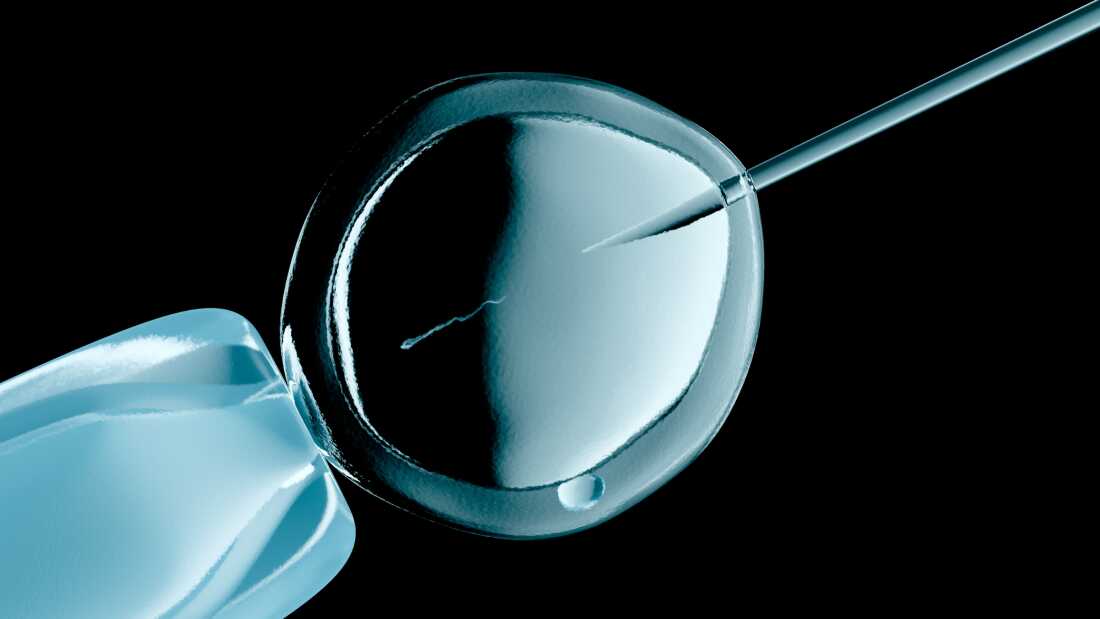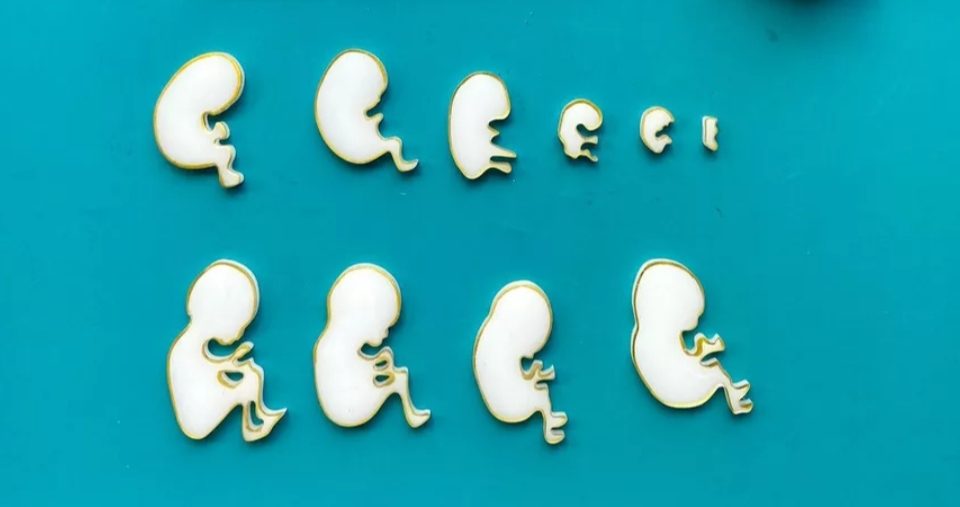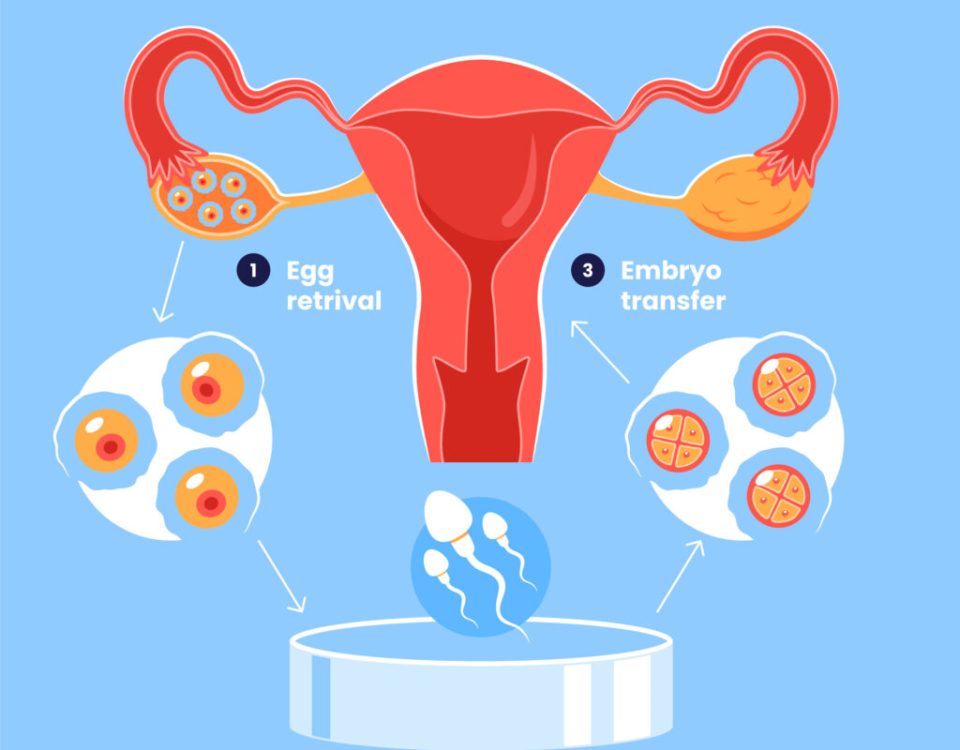
What Happens to Your Body After Failed IVF
April 18, 2025
Why Is IVF Controversial Despite Periods?
April 18, 2025Is IVF Expensive? A Deep Dive into Costs, Options, and What You Need to Know
In vitro fertilization (IVF) is a life-changing option for many people dreaming of starting a family. But when you start looking into it, one question pops up fast: Is IVF expensive? The short answer is yes—it can be. A single cycle in the U.S. often runs between $12,000 and $25,000, and that’s before you add in extras like medications or special procedures. For lots of folks, that price tag feels like a mountain too steep to climb. But here’s the thing: the full story is more than just a big number. Costs vary, options exist, and there’s a lot you can do to make it work.
This article is your guide to understanding IVF costs inside and out. We’ll break down what you’re actually paying for, explore why it’s so pricey, and share practical ways to manage the expense. Plus, we’ll dig into some fresh angles—like how your location impacts the bill, the hidden emotional costs, and what new research says about affordability in 2025. Whether you’re just curious or seriously considering IVF, stick around. You’ll walk away with a clearer picture and maybe even a little hope.
Why Does IVF Cost So Much?
IVF isn’t cheap, and there’s a reason for that. It’s a complex process that involves a team of experts, high-tech equipment, and a whole lot of care. Let’s unpack the main pieces that drive up the price.
The Science Behind the Price Tag
IVF is like a high-stakes science project. Doctors retrieve eggs from your ovaries, fertilize them with sperm in a lab, and then transfer the resulting embryo back into the uterus. That takes precision. You’ve got fertility specialists, embryologists, and nurses working together, plus lab equipment that’s straight out of a sci-fi movie. All of that costs money to maintain.
On top of that, medications play a huge role. To get your ovaries to produce multiple eggs (instead of the usual one per month), you’ll need hormone injections. These drugs can cost anywhere from $3,000 to $6,000 per cycle, depending on your dose and how long you need them. It’s not just a pill you pop—it’s a tailored plan, monitored with frequent ultrasounds and blood tests.
The Human Factor
Think about the people involved. Your doctor isn’t just checking a chart; they’re customizing every step for your body. Embryologists are handling tiny cells with microscopes, making sure everything goes perfectly. Even the receptionist scheduling your appointments is part of a system designed to keep things running smoothly. Salaries for these skilled pros add up fast.
The Success Rate Reality
Here’s a tough truth: IVF doesn’t always work the first time. In 2021, the CDC reported that only about 34% of IVF cycles in women under 35 led to a live birth. That drops as you get older—down to 11% for women over 40. Since success isn’t guaranteed, many people need multiple cycles, which multiplies the cost. It’s not just about paying for one shot; it’s about investing in a process that might take a few tries.
Quick Fact: A 2024 study from Stanford found that couples with lower incomes are more likely to stop after one failed cycle because of the cost. Higher-income folks? They’re more likely to keep going, even if it means spending $50,000 or more.

Breaking Down the Costs: What Are You Paying For?
If you’re wondering where all that money goes, here’s a closer look at the pieces of an IVF cycle. Costs can vary depending on where you live, your clinic, and your specific needs, but this gives you a solid starting point.
The Base Price
Most clinics charge a “base fee” for the core IVF process. This usually covers:
- Monitoring appointments (ultrasounds and bloodwork)
- Egg retrieval (a minor surgery)
- Lab work to fertilize the eggs and grow embryos
- Embryo transfer (placing the embryo in the uterus)
In the U.S., this base fee typically ranges from $10,000 to $15,000 per cycle. Some clinics bundle it all together, while others might break it out. Either way, it’s the foundation of your bill.
Medications
Those hormone shots we mentioned? They’re a separate expense, and they’re not cheap. Depending on your age, health, and how your body responds, you could spend:
- $3,000–$6,000 for a standard cycle
- Up to $10,000 if you need higher doses or longer treatment
Extra Procedures
Sometimes, you need more than the basics. Here are some common add-ons and their costs:
- ICSI (Intracytoplasmic Sperm Injection): If sperm quality is low, doctors inject it directly into the egg. Adds $1,000–$2,000.
- Genetic Testing (PGT): Screens embryos for issues like Down syndrome. Costs $3,000–$7,000, plus a biopsy fee.
- Frozen Embryo Transfer (FET): If you freeze embryos for later, expect $3,000–$5,000 per transfer.
Storage Fees
Got extra embryos? Storing them in a freezer isn’t free. Clinics charge $500–$1,000 per year to keep them safe.
A Sample Bill
Here’s what a typical IVF cycle might look like in 2025:
| Item | Cost Range |
|---|---|
| Base IVF Fee | $10,000–$15,000 |
| Medications | $3,000–$6,000 |
| ICSI (if needed) | $1,000–$2,000 |
| Genetic Testing | $3,000–$7,000 |
| Embryo Storage (1 year) | $500–$1,000 |
| Total | $17,500–$31,000 |
This doesn’t even include travel, time off work, or a second cycle if the first one fails. It’s a big range, but it shows how quickly things add up.
Does Where You Live Change the Cost?
Your zip code matters more than you might think. IVF prices aren’t the same everywhere, and that’s because of a few key factors.
City vs. Rural Clinics
Big cities like New York or Los Angeles often have higher costs—sometimes $20,000 or more per cycle. Why? Rent is pricier, staff salaries are higher, and demand is through the roof. In smaller towns or rural areas, you might find clinics charging closer to $12,000. But there’s a catch: fewer options mean you might have to travel anyway, adding gas or plane tickets to your tab.
State Laws and Insurance
Some states in the U.S. require insurance to cover IVF, which can slash your out-of-pocket costs. As of 2025, 21 states have fertility coverage mandates, but the rules vary. For example:
- New York: Covers up to three cycles if you earn under $195,000 a year.
- California: Starting in 2024, some plans must cover IVF, but it’s still rolling out, and not everyone qualifies.
If you’re in a state without coverage—like Alabama or Texas—you’re likely paying the full amount yourself. Posts on X in early 2025 show people frustrated about this gap, with some calling it “unfair” that insurance hikes for everyone but doesn’t always help them directly.
Going Abroad
Here’s something not talked about enough: medical tourism. Countries like Mexico, Spain, or the Czech Republic offer IVF for $5,000–$8,000 per cycle—half the U.S. price. The catch? You’ve got to factor in flights, hotels, and the risk of spotty follow-up care. Still, for some, it’s a game-changer. A 2023 report from the International Fertility Federation noted a 15% uptick in Americans heading overseas for cheaper treatments.
Tip: If you’re thinking about this, research clinics with good reviews and ask about success rates. Saving money won’t feel great if the care isn’t up to par.
The Emotional Cost: More Than Just Money
IVF isn’t just a hit to your wallet—it’s a rollercoaster for your heart and mind. This side of the story doesn’t get enough airtime, but it’s huge.
Stress and Uncertainty
Every step comes with big feelings. Will the shots work? Will the embryos take? If it fails, can you afford to try again? A 2024 study from the American Psychological Association found that 40% of IVF patients report moderate to severe anxiety during treatment. That’s not just “nerves”—it’s sleepless nights and constant worry.
The Toll on Relationships
Couples often say IVF tests their bond. One partner might feel guilty if their body “causes” the issue. Money fights can flare up too—spending tens of thousands isn’t easy to agree on. On X, people share raw stories: “IVF drained our savings and almost our marriage,” one user posted in March 2025.
Coping Strategies
You don’t have to go it alone. Here’s what helps:
- Talk it out: Find a therapist who gets fertility struggles. Many clinics offer free counseling—ask!
- Lean on others: Online groups (like Reddit’s r/IVF) are full of people who’ve been there.
- Set boundaries: Decide upfront how many cycles you’ll try, so you’re not deciding in the heat of the moment.
Interactive Quiz:How’s IVF Affecting You?
- Do you lose sleep over treatment costs? (Yes/No)
- Have you argued with your partner about money lately? (Yes/No)
- Do you feel hopeful or hopeless most days? (Hopeful/Hopeless)
Count your “Yes” and “Hopeless” answers. More than two? It might be time to seek extra support.
Can You Make IVF More Affordable?
Yes, IVF is expensive, but it’s not all doom and gloom. There are ways to bring the cost down or spread it out. Let’s explore some real options.
Insurance and Employer Benefits
If your state doesn’t mandate coverage, check your job. Big companies like Starbucks, Google, and Amazon now offer IVF benefits—sometimes up to $25,000. Even smaller firms are jumping in. A 2025 survey by Carrot Fertility found that 68% of U.S. workers say fertility benefits would sway their job choice. Ask HR what’s available—you might be surprised.
Financing Plans
Clinics know the price is steep, so many offer payment plans. You could:
- Pay $500–$1,000 a month with zero interest (some clinics do this for 12–24 months).
- Take out a fertility loan from companies like Future Family or CapexMD. Rates vary, but they’re often lower than credit cards.
Pro Tip: Compare terms. A low monthly payment might mean more interest over time.
Grants and Discounts
Nonprofits want to help. Groups like Baby Quest or the Tinina Q. Cade Foundation give out grants—sometimes $5,000 or more—to cover IVF. Clinics might also cut you a break if you’re a veteran, teacher, or low-income. Call around and ask; not every deal is advertised.
Mini-IVF: A Cheaper Twist
Ever heard of mini-IVF? It uses fewer drugs to produce fewer eggs, dropping the cost to $5,000–$7,000 per cycle. Success rates are lower (around 20% per cycle), but it’s gentler on your body and wallet. A 2024 study in Fertility and Sterility showed it’s gaining traction among younger patients who don’t need a full blast of meds.
Checklist: Is Mini-IVF Right for You?
✔️ You’re under 35 with decent egg reserves.
✔️ You’re okay with a lower chance per try.
❌ You need lots of embryos for genetic testing.
❌ Your doctor says your odds are better with standard IVF.
What’s New in 2025? Fresh Research and Trends
IVF costs aren’t static—they’re shifting with new tech, policies, and attitudes. Here’s what’s hot right now, based on the latest data and chatter on platforms like X.
Subsidies on the Horizon
In February 2025, the White House pushed an executive order to expand IVF access, aiming to lower costs to $12,000–$25,000 per cycle with federal help. Details are still fuzzy (full plan drops May 19, 2025), but it’s got people talking. On X, some cheer the idea of “IVF for all,” while others worry it’ll jack up insurance for everyone. Either way, it’s a sign affordability is on the radar.
Tech Cutting Costs
New tools are shaking things up. A 2024 paper from Reproductive Medicine highlighted a “simplified culture system” that slashes lab costs by 90%. It’s not everywhere yet, but in places like Kenya, it’s dropping IVF to $2,000 per cycle. Could the U.S. catch up? Experts say it’s possible by 2030 if clinics adopt it.
The Donor Debate
Using donor eggs or sperm is pricey—$20,000–$60,000 extra—but it’s trending. Why? Older couples (over 40) see higher success rates with donor materials (up to 50% per cycle, per the CDC). The catch? It’s a financial leap, and not everyone’s comfy with the idea. X posts in 2025 show a split: some call it “worth every penny,” others say it’s “too far from natural.”
Poll:Would You Consider Donor Eggs or Sperm?
- Yes, if it boosts my odds.
- No, I want my own DNA.
- Maybe, but the cost freaks me out.
Drop your vote in the comments and see what others think!

The Hidden Upside: IVF’s Long-Term Value
Here’s a perspective you won’t find everywhere: IVF might cost a ton upfront, but it could pay off down the road. How? Let’s crunch some numbers and think big.
A Mini Cost-Benefit Analysis
Say you spend $50,000 on IVF and have a baby. That kid grows up, works, and pays taxes. A 2023 study from the University of New South Wales estimated that each new person adds about $250,000 to the economy over their lifetime (adjusted for 2025 dollars). Subtract your $50,000, and society’s still up $200,000. For you, it’s not about cash—it’s about family—but it’s cool to see the ripple effect.
Beyond Money
The real win? Joy. A 2024 survey by the Fertility Society of America found 85% of IVF parents say the cost was “worth it” once they held their child. One mom said, “I’d have paid double. You can’t put a price on this.” It’s not just a transaction; it’s a transformation.
Real Stories: What IVF Costs Mean to People
Numbers are one thing, but stories hit different. Here are two real-life takes (names changed) to show how IVF’s price plays out.
Sarah’s Journey
Sarah, 32, lives in Ohio. Her insurance didn’t cover IVF, so she and her husband saved $18,000 for one cycle. It failed. “We were crushed,” she says. “But we took out a loan for round two—$20,000 more—and got our son. It’s a debt we’ll pay for years, but he’s our world.” Sarah’s tip? “Start small—sell stuff, cut cable. Every dollar counts.”
Mike’s Move
Mike, 38, from Texas, went a different route. “One cycle here was $22,000, and we couldn’t swing it,” he says. So he and his wife flew to Spain—$7,000 for IVF, plus $2,000 for travel. “It worked first try. We’re back home with twins and less debt.” His advice? “Look beyond your backyard. It’s scary, but it can save you.”

Your Next Steps: Making IVF Work for You
Feeling overwhelmed? Don’t be. Here’s a step-by-step game plan to tackle IVF costs head-on.
Step 1: Get the Facts
- Call clinics near you for quotes. Ask what’s included and what’s extra.
- Check your insurance—call the number on your card and say, “What’s my fertility coverage?”
- Look up your state’s laws on fertility mandates (try fertilityiq.com).
Step 2: Crunch Your Numbers
- Add up your savings. How close are you to $15,000?
- List monthly expenses you could cut (coffee runs, subscriptions).
- Estimate add-ons you might need (talk to your doctor).
Step 3: Explore Options
- Apply for a grant—check Baby Quest or CNY Fertility’s programs.
- Ask your boss about fertility benefits, even if it’s awkward.
- Research mini-IVF or overseas clinics if you’re open to it.
Step 4: Plan for the Long Haul
- Decide your limit: “We’ll try two cycles, then reassess.”
- Build a support squad—friends, family, or a counselor—to keep you grounded.
Checklist: Ready to Start?
✔️ I’ve got a clinic quote.
✔️ I know my insurance deal.
❌ I haven’t budgeted yet.
❌ I’m still too stressed to decide.
Final Thoughts: Is IVF Worth It?
So, is IVF expensive? Yup, no denying it. A single cycle can cost as much as a car, and there’s no guarantee it’ll work. But it’s not just about the dollars—it’s about what you’re chasing. For some, it’s a baby after years of heartbreak. For others, it’s a chance to beat the odds. The price stings, but the payoff? That’s priceless to those who make it.
What’s your take? Maybe you’re weighing IVF right now, or maybe you’ve been there. Share your story below—I’d love to hear it. And if you’re on the fence, start small: one phone call, one budget tweak. You don’t have to figure it all out today. Just take the next step.




